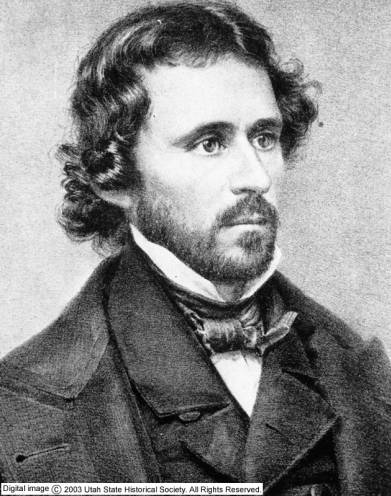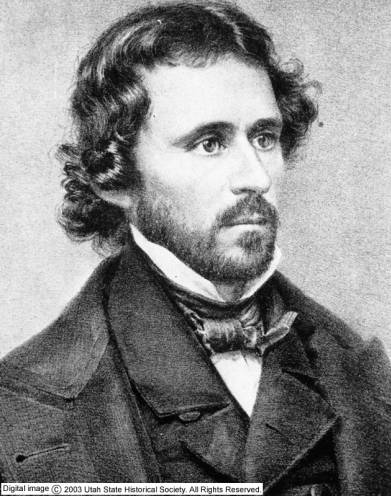John C. Fremont was born in Savannah, Georgia, in 1813, the son of Charles Fremont, a French emigre, and Ann Beverly Whiting of Virginia. Fremont spent his boyhood in Charleston and was educated in the Scientific Department of the College of Charleston before his expulsion in 1831, three months short of graduation. In 1833 Fremont obtained a civilian post as …
John Charles Fremont
Mary Lee Spence Utah History Encyclopedia, 1994 John C. Fremont was born in Savannah, Georgia, in 1813, the son of Charles Fremont, a French emigre, and Ann Beverly Whiting of Virginia. Fremont spent his boyhood in Charleston and was educated in the Scientific Department of the College of Charleston before his expulsion in 1831, three months short of graduation. In …
The Fremont Period
Steven R. SimmsEmeritus Professor of AnthropologyUtah State University, Logan Based on:Simms, Steven R. 2008/2016 Ancient Peoples of the Great Basin and Colorado Plateau (with original artwork by Eric Carlson and Noel Carmack). Routledge, New York. The Fremont culture was borne of indigenous Archaic foragers interacting with immigrant Puebloan farmers moving north across the Colorado and San Juan rivers from New Mexico …
The Wenner Family Enjoyed Life on Fremont Island
Yvette D. Ison History Blazer, May 1995 When Kate and Uriah James Wenner arrived in Salt Lake City in 1880 they expected to establish permanent residence in the city. The newlyweds built a home on East South Temple, and Wenner opened a law office. The couple soon became prominent members of Salt Lake society. In 1883 Wenner was appointed as …
Fremont’s Exploration
Thomas G. Alexander Utah, The Right Place By the early 1840s, as immigrants struck out for Oregon and California, Americans contemplated adding both of these regions as United States possessions. Enthusiasts such as Missouri Senator Thomas Hart Benton, his daughter Jessie, and her husband, John C. Fremont, considered an empire on the Pacific as America’s “Manifest Destiny.” Judging themselves agents …
Archaic Period
EONS OF FORAGERS: THE ARCHAIC PERIOD Steven R. SimmsUtah State University, Logan From:Simms, Steven R.2008/2016 Ancient Peoples of the Great Basin and Colorado Plateau (with original artwork by Eric Carlson and Noel Carmack). Routledge, New York. The Archaic period spans over 250 human generations, over 40 times the duration of Euro-American history in Utah. In the wake of the Paleoindian explorers …
Chapter Two Bibliography
First Peoples Culture and community Allen, James B., and Ted J. Warner. “The Gosiute Indians in Pioneer Utah.” Utah Historical Quarterly 39, no. 2 (1971): 162-77. Ambler, J. Richard, and Marc Gaede. The Anasazi: Prehistoric People of the Four Corners Region. Flagstaff: University of Northern Arizona, 1977. Bancroft, Hubert Howe. History of Utah, 1540-1887. 1889. Beckwith, Frank. Indian Joe: in …
Chapter One Bibliography
The Place Culture and Community Clifton, Paul. The Fastest Men on Earth. London: Hebert Jenkins Ltd., 1964. Tamarack: Stories of the Uintah Basin. 1976. Geology and the Environment Andersen, B. A., and A.H. Holmgren. Mountain Plants of Northeastern Utah. 1970. Rev. ed. Utah State University Extension, 1996. Arnow, L., B. Albee, and A. Wyckoff. Flora of the Central Wasatch Front, …
“This Is the Place” Monument
Tricia Smith-Mansfield Utah History Encyclopedia The “This Is the Place” Monument is located at the mouth of Emigration Canyon in Salt Lake City, Utah. In 1937 a state commission comprised of representatives of various faiths selected Mahonri M. Young, a grandson of Brigham Young, to design the monument, which derives its name from the words Brigham Young is said to …


